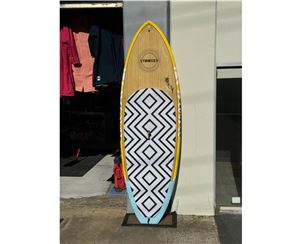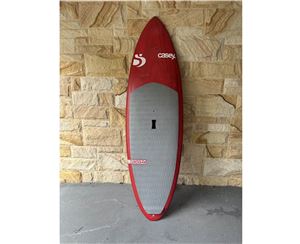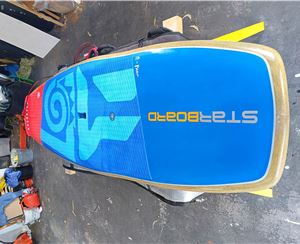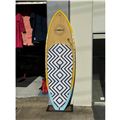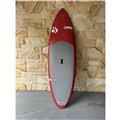How to read runners on your Stand Up Paddle board
Recently a forum topic came up on how to "read runners" - the technique of riding swells on a Stand Up Paddle board whilst doing a downwinder.
Some great posts & info, including:
JonathanC wrote:
When you are first trying to catch runners you will feel the nose of the board drop just as a wave passes underneath you - almost as if the tip of the board scrapes down the back of the wave. That is what you are looking for, as the nose of the board drops reach right forward as Ekolu Kalama does and PADDLE HARD ! Even better than waiting for it to drop is to anticipate that moment and get your self ready so that you can paddle down the little ramp, it's as if you are trying to punch the tip of the board into the wave in front, in fact that may happen a little. Once you are on the runner if it is steep enough you may quickly need to move back into surfing stance, in the beginning I wouldn't worry too much about turning 45 degrees and going down the line - there will be enough going on to start with! In some conditions you can just remain pretty much in your regular paddling stance but as soon as it gets bigger or steeper or both you will find that you are moving in and out of surfing stance pretty constantly.
You can actually get a feel for it in tiny wind swell, always look for an area of water in front of you that is "down hill" and paddle down into it. You will need to constantly trim and turn the board to pick up these tiny little guys and you don't catch them as such but just get a little push, they help you keep you speed up so that when a real runner comes you are already travelling that little bit faster to make it easier to power onto. You aim to be gliding as much as possible and always looking for the next little pocket to help you keep the momentum up.
Once you get more comfortable actually gliding down the line or across the wave face you are always looking for the next swell that you can use the speed you have from going down the line to pick up, it's possible to get enough speed to accelerate over the back of the wave in front and then even the one in front of that - at that point you are in down wind paradise!! It's incredibly addictive, I just got back from a paddle with a friend, 90 minutes of upwind into approx 12 to 15 knots than 55 minutes of gentle little linked glides back home. It doesn't need to be howling windy to have fun but probably a good 20 to 25 or more helps you pick up the techniques faster.
P co:
I find there is a big difference between the river and the ocean. On the river you can actually paddle faster than the small waves and therefore paddle onto runners in front of you. Heaps easier than the ocean where the swells travel faster and come up from behind. It also seems on the ocean it is not always the bigger swells that you can catch, maybe the its the wind swell rather than the ocean swell here too. Would loveto try it with the wind and swell direction perfectly inline.
mikeman added:
Don't look behind you as you want to focus on what is happening under and ahead of you. You need to try and anticipate when the nose will drop into the trough and then hit it.
This is the opposite to surfing where you are looking for a high pressure "push". What you want to look for here is the low pressure "pull". The nose of your board is what you want locked into the low pressure pocket at the back of the run.
This all sounds like gibberish but once you get it you will know what I mean. enough time in the water and you will start to feel what the water is doing. Its your job to respond to what it is doing and go with the flow...
Once you get this part worked out you need to read the ever changing swell actions and try and follow the trough as it moves around a lot.
A great video:





